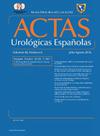Tendencia temporal y efectos de la edad, el periodo y la cohorte en la mortalidad por cáncer renal en España entre 1983 y 2022
IF 1.2
4区 医学
Q3 UROLOGY & NEPHROLOGY
引用次数: 0
Abstract
Objective
This study examines trends and disparities in kidney cancer (KC) mortality in Spain from 1983 to 2022, focusing on gender, birth cohort, and age influences.
Methods
Data from the Spanish National Institute of Statistics were analyzed using age-standardized mortality rates (ASMRs). Joinpoint regression identified temporal trends and annual percentage changes, while Age-Period-Cohort (A-P-C) analysis assessed the impacts of age, calendar period, and birth cohort on mortality.
Results
KC mortality increased significantly for both sexes, with men experiencing a steeper rise (1.2% annually) compared to women (0.6% annually). Joinpoint analysis revealed distinct phases: a sharp increase until the mid-1990s, followed by stabilization for men and a slight decline for women. Men aged over 50, particularly those above 80, showed pronounced increases. A-P-C analysis confirmed age as a significant risk factor, with consistently higher mortality rates observed among men across all age groups. Men born from the early 20th century until the 1960s faced increasing mortality risks, while women's risk, after an increase in the early 20th century, stabilized after the 1933 birth cohort. For those born after 1960, both sexes show a potential decline in KC mortality, with a slight upturn in men from the 1980s onwards. The period effect exhibited an increase during the 1980s-1990s, followed by stabilization for men and a continuous decrease for women.
Conclusion
This study reveals significant disparities in KC mortality trends in Spain across genders, birth cohorts, and age groups. Despite advancements in diagnosis and treatment, substantial public health challenges remain.

1983年至2022年西班牙肾癌死亡率的时间趋势和年龄、周期和队列的影响
目的本研究探讨1983年至2022年西班牙肾癌(KC)死亡率的趋势和差异,重点关注性别、出生队列和年龄的影响。方法采用年龄标准化死亡率(ASMRs)对西班牙国家统计局的数据进行分析。接合点回归确定了时间趋势和年百分比变化,而年龄-时期-队列(A-P-C)分析评估了年龄、日历时期和出生队列对死亡率的影响。结果男性和女性的skc死亡率均显著上升,男性的上升幅度更大(每年1.2%),而女性的上升幅度更大(每年0.6%)。联合点分析显示了不同的阶段:在20世纪90年代中期之前急剧上升,随后男性保持稳定,女性略有下降。50岁以上的男性,尤其是80岁以上的男性,发病率明显上升。a - p - c分析证实年龄是一个重要的风险因素,在所有年龄组的男性中观察到的死亡率都一贯较高。从20世纪初到20世纪60年代出生的男性面临着不断增加的死亡风险,而女性的风险在20世纪初增加后,在1933年出生队列之后稳定下来。对于1960年以后出生的人来说,男女的KC死亡率都有可能下降,从20世纪80年代开始,男性的KC死亡率略有上升。在20世纪80年代至90年代期间,月经效应有所增加,随后男性的月经效应趋于稳定,女性的月经效应持续下降。结论:本研究揭示了西班牙不同性别、出生队列和年龄组的KC死亡率趋势存在显著差异。尽管在诊断和治疗方面取得了进步,但仍然存在重大的公共卫生挑战。
本文章由计算机程序翻译,如有差异,请以英文原文为准。
求助全文
约1分钟内获得全文
求助全文
来源期刊

Actas urologicas espanolas
UROLOGY & NEPHROLOGY-
CiteScore
1.90
自引率
0.00%
发文量
98
审稿时长
46 days
期刊介绍:
Actas Urológicas Españolas is an international journal dedicated to urological diseases and renal transplant. It has been the official publication of the Spanish Urology Association since 1974 and of the American Urology Confederation since 2008. Its articles cover all aspects related to urology.
Actas Urológicas Españolas, governed by the peer review system (double blinded), is published online in Spanish and English. Consequently, manuscripts may be sent in Spanish or English and bidirectional free cost translation will be provided.
 求助内容:
求助内容: 应助结果提醒方式:
应助结果提醒方式:


